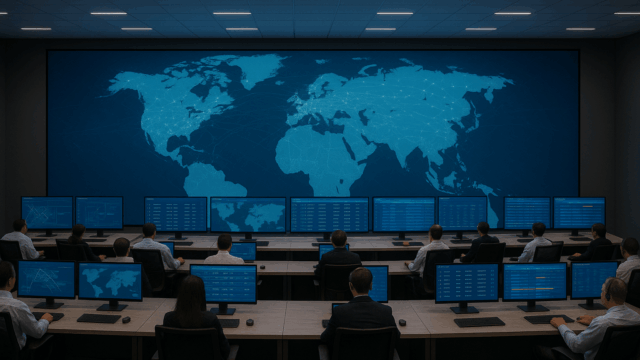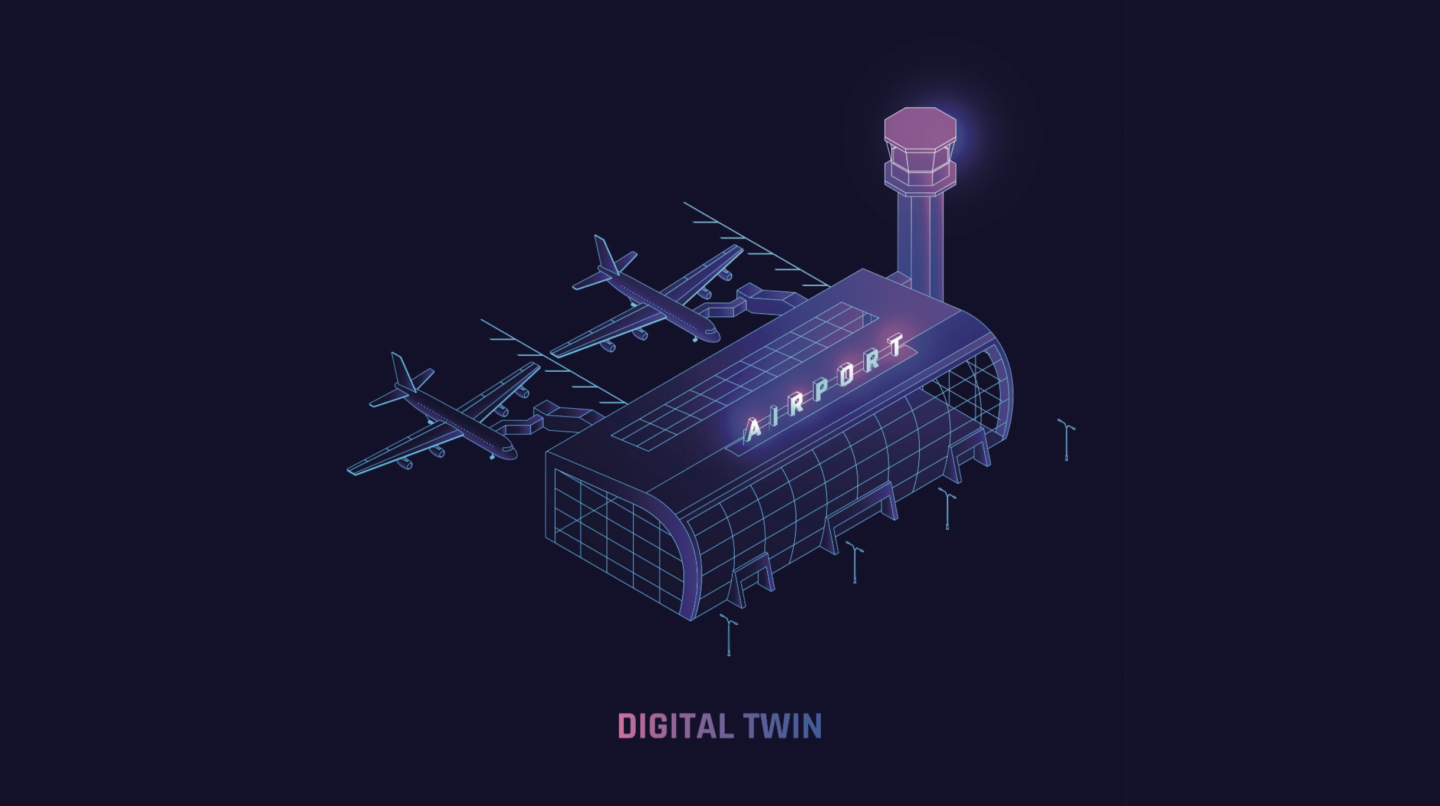
Digital Twin has become a buzzword that is utilized to describe a large range of IT initiatives within airports and organizations in general. There are some great examples of how they can support operational and production processes, but there exist also numerous examples where organizations simply start and struggle. To obtain success it is crucial to understand what a Digital Twin entails and which pre-requisites you will need.
In this article we will share insights from our professional experience, answering the following questions:
- What is a (real) Digital Twin and how can it benefit your organization?
- What types of Digital Twins are relevant for airports, including use-cases and challenges?
- How to assess where your organization stands through our maturity level model and how to achieve a successful implementation?
What is a Digital Twin
Several definitions of the term Digital Twin exist in literature. The most dominant one, summarizing all important aspects, is the definition from IBM:
“A digital twin is a virtual representation of an object or system that spans its lifecycle, is updated from real-time data, and uses simulation, machine learning and reasoning to help decision-making“
The definition has multiple aspects to breakdown:
- A virtual representation: Logically, the Digital Twin is not the real object or system, therefore it is a virtual copy
- Spans its lifecycle: This element covers the fact that the Digital Twin does not only represent the now, but also the past and future state of the object or system
- Real-time data: The Digital Twin needs to be up-to-date by feeding it the latest available information – such that there is no mismatch between the virtual copy and the real object or system
- Help decision making through simulation & machine learning: Ideally, the use cases for the Digital Twin are aimed to support decision making, and by having all information virtually available it allows for extensive simulations and machine learning models to enable better decisions
Obviously, it is not an easy task to achieve the full definition of what IBM is suggesting, it may not even be clear where and how to start. Nevertheless, it can result in clear benefits for your organization, if done right. To further dive into the potential benefits of a Digital Twin, we will consider the airport environment as a context.
Airport Digital Twins
Within Airports a Digital Twin may already exist to a certain extent, especially when built for a specific context. The positive aspect of it is that Airports may already benefit from the Digital Twin, however it may be more complicated to integrated other contexts at a later point in time.
The following list contains the most important clusters of the Digital Twin’s found at Airports:
1. Terminal Digital Twins: These are digital twins that focus on the terminal and its associated systems, such as check-in kiosks, baggage handling systems, and security checkpoints.
2. Air traffic control Digital Twins: These are digital twins that focus on the systems used to manage and control air space and air traffic, including radar systems and other technologies.
3. Asset management Digital Twins: These are digital twins that focus on the management and maintenance of physical assets at the airport, such as buildings, equipment, and infrastructure.
4. Environmental & Energy management Digital Twins: These are digital twins that focus on optimizing energy use and maintain the environmental state at the airport, including analyzing data on energy consumption and identifying opportunities for improvement.
For each of the types there exist a multitude of valuable use-cases and related challenges. In the table below we have created a summary of some the most valuable use cases and common challenges:
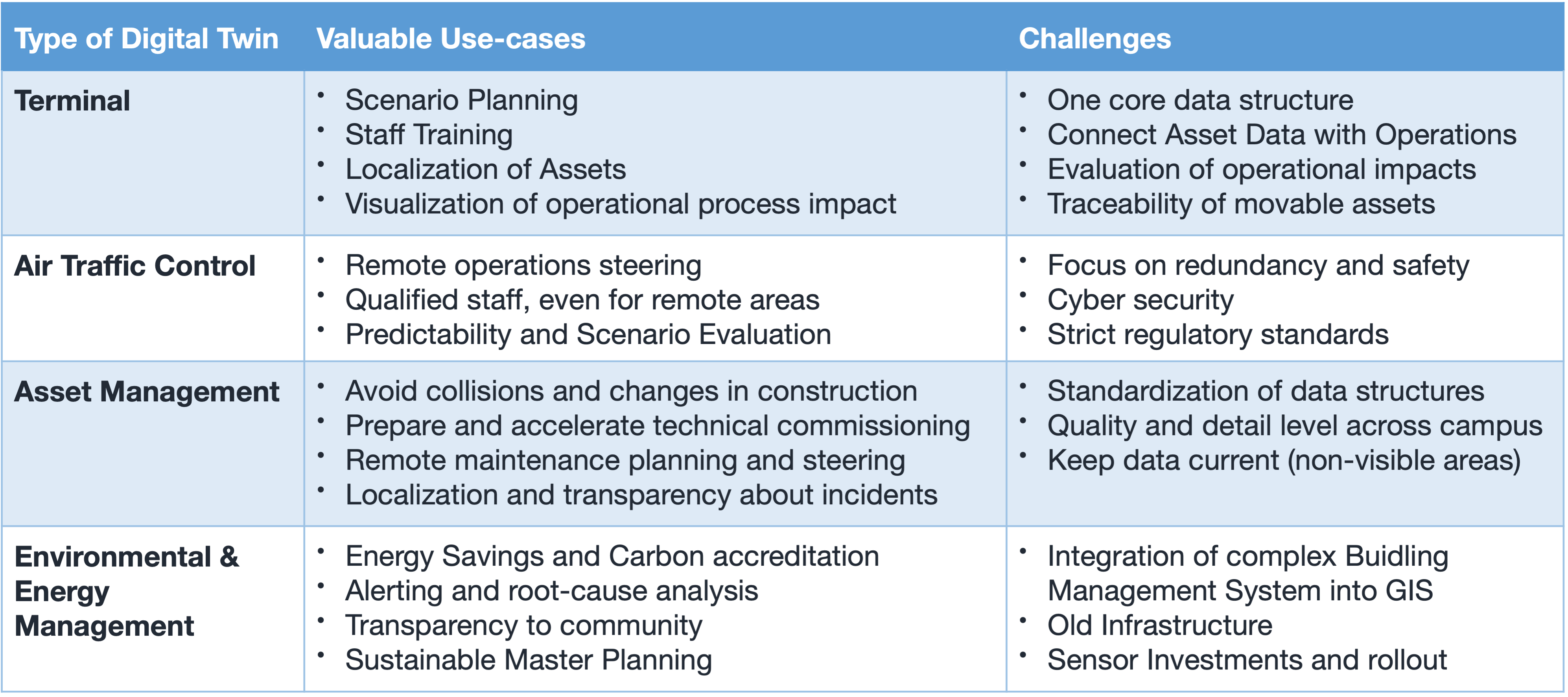
The table above is not exhaustive but provides a clear indication of how Digital Twins can be utilized within the Airport context. The greatest, common challenge, although there are different specifics per type, lies in setting up the data structure that is suitable to achieve the full definition of the twin, as defined by IBM.
Maturity Level Framework and Success Factors
An useful first step when assessing Digital Twin efforts is to determine where you currently stand. We have developed a Maturity Level Framework consisting of 5 levels to aid this process.
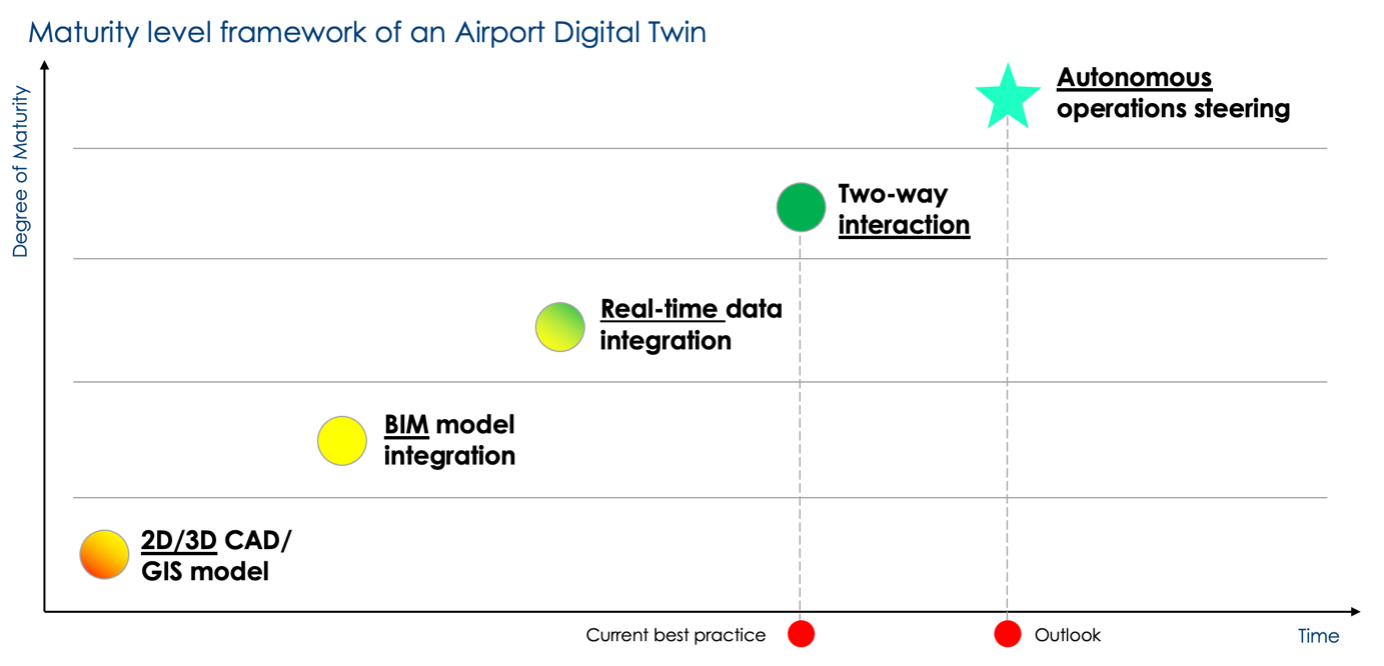
The levels move from a virtual copy towards the integration of real-time data with finally the Digital Twin having the potential to autonomously steer what is happening in the real world. The framework also considers all elements from the IBM definition of the Digital Twin, starting with creating the virtual replica, then spanning the life-cycle and including real-time data towards the inclusion of simulation, AI and finally the decision making capability.
Within the framework, there exist some common denominators that are pre-requisite to achieve success. First, within the Organization there needs to be a common strategy and data structure for the Digital Twin across the business units. Looking at Processes, the change process needs to be fully integrated within the Digital Twin as else there is a high risk the twin is not up-to-date anymore. On the Systems and IT side there need to be the capabilities to support the complex twin, with high requirements on availability and performance. Finally, this all relates to the People aspect – where ownership of the Twin and the related benefits must be fully covered within the organization.
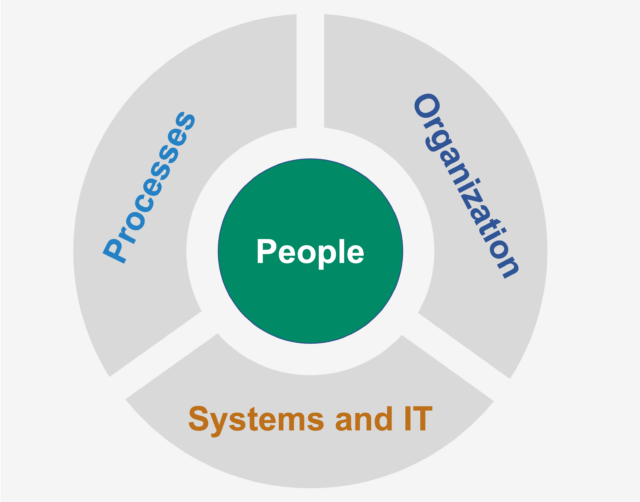
These aspects need to be brought together within the organization, as well as a thorough, thoughtful build of the Digital Twin based on its scope and goals. Together with our partners, we have also created a roadmap that can take your Digital Twin efforts to the next level through a proven, step-by-step approach. We look forward to discussing your experiences and challenges with you.
We will also share our latest insights about Digital Twins on LinkedIn.


